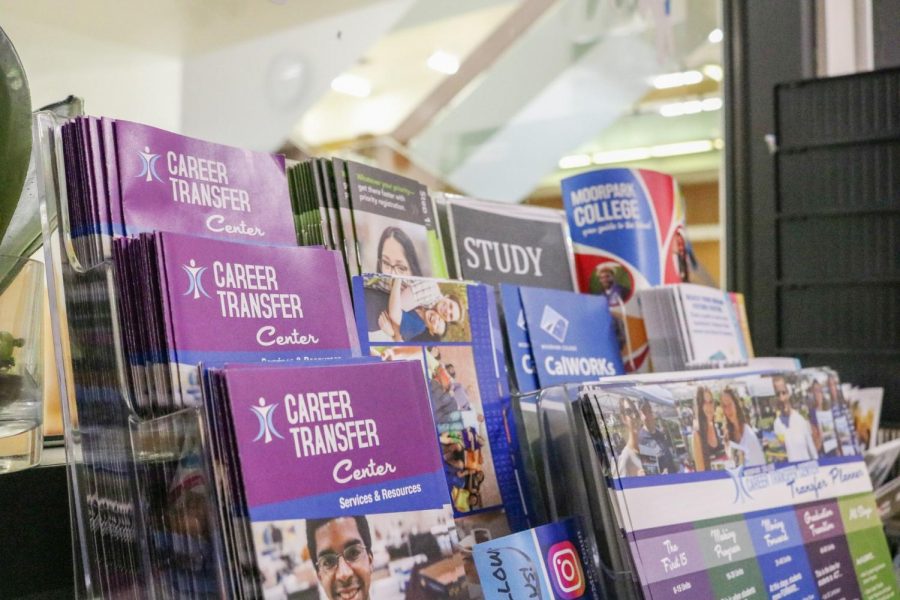
The career transfer center offers advice and pathways to transfer. The amount of information, preparation, and choices can be overwhelming to some students. Photo credit: Cole Carlson
Many students reading this have either just graduated from high school or returned from a gap year or four-year college. College however, is quite different from high school because you have the opportunity to control your educational path.
The freedom of picking what your classes are and when to take them for the remainder of your college years can be exhilarating compared to the strict high school schedules.
The expectation (and advertised plan) is to be at Moorpark College for two years to explore possible majors and take general classes in order to cover transfer requirements of four-year universities. Everything gets perfectly wrapped up with a neat little bow and students are in and out in two years. The reality of the situation is that every major is entirely different, along with the amount of time you spend to complete your required courses at Moorpark.
According to the Moorpark College Catalog of 2017-2018 there are two general degrees a student can earn, an Associate degree or an Associate Degree for Transfer (ADT). Under the umbrella of an ADT is an Associate in Arts for Transfer (AA-T) and an Associate in Science for Transfer (AS-T). Both require a minimum of 60 semester (or 90 quarter) units for completion.
Each one of the three paths have different classes and requirements in order to complete, which means paying attention to what you take and how it affects your degree is important. If transferring to a four-year is your goal, then choosing if you want to go to a California State University (CSU), a University of California (UC) or out-of-state college should be next on your priority list.
According to Career Transfer Center Coordinator and general counselor Giselle Ramirez, the classes a student should be considering as their first priority are their major prep classes. Figuring out your major is vital in the attempt to transfer within two to three years.
“The major is the biggest thing that keeps students here [Moorpark College] because they follow one major and then they switch,” said Ramirez. “Then they switch again so with that comes different major requirements.”
Most of the classes a student takes should be transferrable towards the school they would like to attend. In-state schools have patterns for transfer credits that Moorpark College has already agreed with.
The program Articulation System Stimulating Inter-institutional Student Transfer (ASSIST) has been created to figure out what classes a student needs to take in order to transfer to the school of their choice. Because each school has different course requirements, students must find out what those classes are to qualify for transfer.
The process only starts from here and gets more complicated based on what you major in and where you want to end up. It can be quite daunting and confusing so talking to a counselor as early as possible is ideal to complete your specific college path. Now, counselors are going to start booking appointments two weeks in advance.
“It’s really hard because there’s so little of us and there’s so many students so I know the frustration students go through when we only book a week in advance,” said Ramirez. “They’re calling every morning to get that appointment.”
It’s incredibly important to return to Moorpark College each semester because every year should be meticulously planned out. This way, your valuable time and money is efficiently spent.
